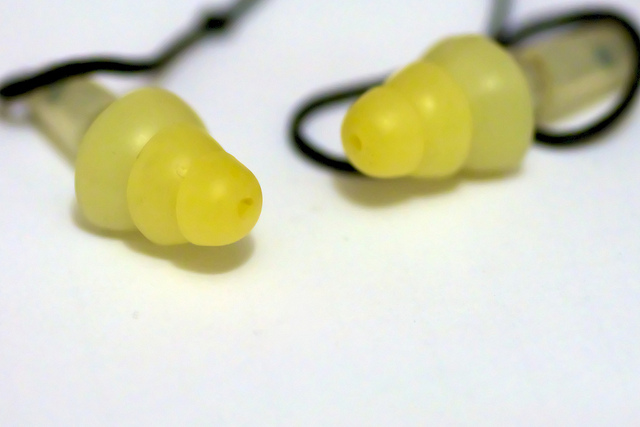This Doesn’t Only Happen To Musicians
Picture yourself on stage: you’re the lead singer in a band soaring up the charts, and you’re on your first tour. You’re rocking it on stage… when suddenly, you can’t hear the music.
You can see your bandmates playing, but you hear nothing. You can still feel the vibrations from the sound system and the drums, but the guitars, the horns, the audience… have all fallen silent.
A musician who can no longer hear is in deep trouble. A vocalist can lose a leg and still sing. A guitarist can be blind and still lay down the riffs. Let either lose the ability to hear, though, and that rising star’s career is over.
Kaput.
Finished.
If you’re a musician, know a musician, or want to be a musician… read this article.
If you care about hearing at all… read this article.
We’re going to tell you what ruins the hearing of more musicians and music lovers than anything else. We’re also going to talk about how to prevent the damage.
This isn’t just important information.
It’s critical for anyone who depends on the ability to hear.

Suffering for your art: an occupational hazard
Musicians, spend a lot of time around loud noises. All the practice sessions, recording sessions, and performances deliver a lot of punishment to their ears– a whole lot more than is safe for a person to take.
Let’s take just a single performance as an example.
Be it a rock band or an orchestra, a performance in a large venue can reach noise levels of over 120 decibels (dB). According to the Centers for Disease Control and Prevention (CDC), the permissible safe exposure times to continuous sound is 85 dB for 8 hours.
For every additional 3 dB above 85 the permissible exposure time is cut in half. The safe exposure time for 120 dB, then is less than 15 seconds.
It’s no wonder, then, that musicians are among the most at-risk occupations for suffering hearing loss.
Tinnitus: sounds where there aren’t any
The most obvious and universal symptom of hearing loss is tinnitus. It’s a condition where someone hears sounds despite there being none. It’s what happens when the ear’s machinery for picking up sounds gets so damaged that it sometimes misfires. For musicians, whose ears are their most important tools they have, this is particularly bad news.
Tinnitus can be anything from a small nuisance to a major problem for its sufferers, and the more damaged the ear is the worse it can get.
For the mildest cases, tinnitus can be no more than occasional ringing in the ear. For the most severe cases, though, it can manifest as full-blown auditory hallucinations. Tinnitus has been known to cause irritability, anxiety and depression.
Yes, it can literally drive you crazy.
But what are people doing about the risk of hearing loss?
Not enough, it turns out.
In the musical community, it’s already pretty standard to advise people to use earplugs when they play and/or sing. A vast majority of musicians, however, still don’t use them regularly.
Let the numbers speak for themselves:
- As little as 6% of the musicians in a given orchestra use hearing protection
- Studies consistently show hearing protection use never goes above 20% of band members for orchestras
- Musicians are 57% more likely to suffer from tinnitus than non-musicians
- Musicians nearly 400% more likely than the average person to have some level of deafness
So what gives? Why do so few use hearing protection when there’s so much at risk?
Part of the reason is because earplugs do exactly what they’re designed to do: block sound. That’s something musicians typically try to avoid.
More than just outright making things softer, though, the real problem is that conventional earplugs only block certain frequencies of sound. Specifically, earplugs tend to be really good at blocking out lower frequency sound, but don’t do much in terms of blocking higher frequency sound.
It’s one thing to have the sounds you hear be softer, but when what you hear becomes fundamentally different from what everyone else hears… that’s unacceptable when you’re making music.
Other common reasons for musicians choosing not to wear earplugs are discomfort and simple lack of knowledge about hearing protection. Good hearing protection isn’t at the forefront of their minds when they’re focused on developing their talents.

But what CAN people do about it?
Actually, technology has already solved a large part of the problem.
More recent advances in earplug design allows for something called “flat attenuation.” That is, newer and more sophisticated earplugs can block all the different frequencies of sound (that we can hear) evenly.
There’s also been a rise in use of custom-molded earplugs. These are specific to the user and do the job of helping out with flat attenuation while also being more comfortable than other earplugs.
In fact, earplugs like these have been around since the mid-90s, and with technologies maturing, they’ve only gotten cheaper and more accessible.
First step: talk with an audiologist. Your hearing is too important not to seek counsel from a professional.
Wrapping it up — how to protect your hearing
In the end, awareness and determination on the musician’s part still plays a crucial role in hearing protection. The tech has made it easier, but as the statistics show, there still aren’t that many people who are properly protecting themselves.
It’s a chore to have to think about protecting your ears all the time. It’s not even one of those slightly more glamorous chores which make you look more professional – like voice lessons, scale drills, and such.
Earplugs are small, they can be irritating, and they’re very easy to forget. It’s a chore… but it might be one of the most important ones you have to do.
Musicians, listen up while you still can.
Abel Cane loves music. Abel also loves being able to hear. This article is written from the heart. Connect @boomalive.


















